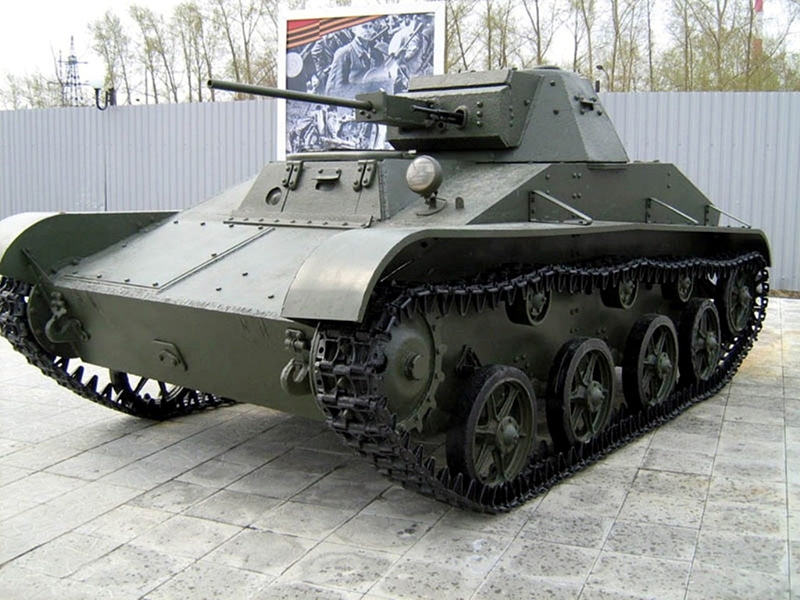
T-60 - Soviet light tank of World War II. Developed in August 1941 year at the Moscow plant number 37 under the direction of Nikolai Alexandrovich Astrova, a leading developer of all domestic line of light tanks of the period. In September of the same year, the T-60 was adopted by the Workers 'and Peasants' Red Army and serially produced in several engineering plants.
T-60 – video
Production of T-60 was continued until February 1943 of the year, when he was replaced on the assembly lines more powerful light tank T-70. All were released 5920 Lung T-60, who took an active part in the battles of the Great Patriotic War in 1941-1943. A small number of T-60 survivors in battles used as tanks reconnaissance, tractors, training machines until the end of the war. On the basis of the T-60 1941 , the first self-propelled unit BM-8-24 class multiple launch rocket systems on tank chassis was built. Soon after the war, the T-60 was withdrawn from Soviet Army, hitherto survived six such tanks in museums in Russia and Finland.
After just three days after the beginning of the Great Patriotic War, 25 June 1941 of the year, Moscow factory number 37 He was ordered to withdraw from the production of light (at that time the classification of small floating) T-40 and the beginning of the conversion plant production capacity to allow easy tank close support of infantry T-50. However, to implement this decision required a complete reconstruction of the plant number 37 and delivering plant hulls, that the situation was totally unacceptable. factory team number 37 with great difficulty coping with the release plans of even a relatively simple design of the T-40, and the production of T-50 was a much more complicated in terms of technology, that only complicated the task.
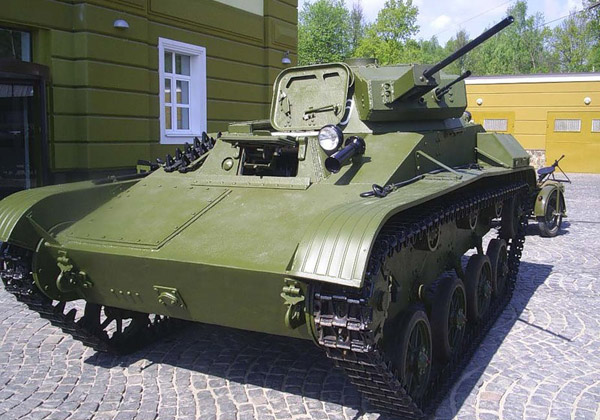
The chief designer of the plant number 37 n. A. ASTROFF from the beginning saw the futility of trying to develop serial production of T-50 in his company. Instead, he and members of his design office for two weeks in late July 1941 year we designed and built a prototype of a new light tank based on well mastered at the plant floating tank T-40. The latter were borrowed layout scheme, chassis components, powertrain, electrical equipment and installation of armament. Due to the refusal of the possibility of movement afloat (at the beginning of the war the T-40 is almost never used as such) It was increased in thickness and mounted at a more advantageous angle frontal armor plating tank. Initially arms remained unchanged as compared with T-40 - one 12.7-mm heavy machine guns and one DShK 7.62mm gun DT. After agreeing with the representative of the military acceptance in. P. Okunev, n. A. ASTROFF wrote a letter to the name and. AT. Stalin with information about the new car and a proposal for its release in the factory number 37 instead of T-50.
The further history of the T-60 Expert opinions vary. There are two versions of events presentation: one canonical, set out in the E Articles. AND. Plates and I. D. Zheltov et, and a second pushed famous Russian historian M. n. Svirin. According to an embodiment of the canonical, built the first prototype of the new tank under the factory designation 0-60 the next day was demonstrated by the People's Commissar for Tank Industry In. A. Malyshev, and he was the prototype serial T-60. M. n. Svirin by analyzing the National Commissariat tank industry document asserts, that the designation "T-60" was assigned initially land prototype version of the T-40 under factory index 0-30, the production version of which is now known as the T-40S and T-30. Accordingly this hypothesis, it is a land version of the T-40 with enhanced reservation has been shown in. A. Malyshev; and a car, now known as T-60, It was developed later. Consequently, time from the start of the T-60 (first "land" 0-30 and only then "lower body" 0-60) before the construction of the prototype 0-60 It was more than two weeks. However, these two weeks, commonly reported in publications, have as their primary source of memoirs H. A. Astrova and it may be related to the final development phase, when 0-30 It was launched in the series and designers have worked only on the "lower body".
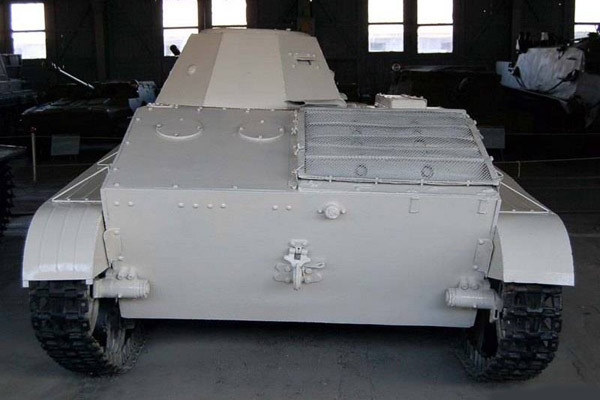
Except for this ambiguity to the type shown in. A. Malyshev prototype, hereinafter referred to above authors agree in describing events. AT. A. Malyshev proposed to re-equip the car aviation 20-mm automatic cannon ShVAK. He arranged an appointment H. A. Astrova with the designers of aircraft armament of the OKB-15 and DB-16 to work out the issue of the installation ShVAK gun into the tank. As a result of joint actions of the tank version of the gun has been created. It was established on the second prototype tank 0-60, which was shown to the Supreme Commander and. AT. Stalin on tests. In no time they were completed, and the decision of the State Defense Committee of the tank was accepted for service under the T-60. plant number 37, 264 Krasnoarmeysky Shipbuilding (Volgograd Shipyard), Gorky automobile (GAS) and the Kharkov Tractor (XTZ) It was prescribed to produce 10 000 T-type tanks 60. To view the tank construction plant № 37 released pre-production samples for T-60 and GAZ HTZ.
Subsequently, the 20-mm gun more constructively being finalized by December 1941 , inclusive, when it formally accepted into service under the designation TNSH (or TNSH 1 - tankovaya Nudelman - hospital).
However, the deployment of mass production of new tanks was not a sufficient number of design drawings and documentation. These materials have been prepared in September-October 1941 , the staff of the plant number 37 already under the German bombing in Moscow and on the verge of evacuation. The chief designer of the plant number 37 n. A. ASTROFF personally experienced surpassed the T-60 from Moscow to Gorky (it was credited as the sea trials of the tank), and in mid-October to the same set of design and technological documentation has been delivered. Kits GAZ headed A. M. Krieger (and also. I. Freidlin, FROM. A. Batanov, TO. M. Chivkunov) We have made great efforts to further simplify the structure of the T-60 and its adaptation to possible gas production. In November 1941 Gorky, the first serial "shestidesyatki" were delivered to the troops. It GAZ designers developed an efficient Engine preheater, which has become an integral feature of all further construction machines H. A. Astrova. Sam chief designer since October 1941 he worked on the further improvement of the combat capabilities of light tank. These work in December 1941 the year ended with the creation of a light tank T-70, which I used a lot of components and assemblies from newly mastered in the production of "shestidesyatki".
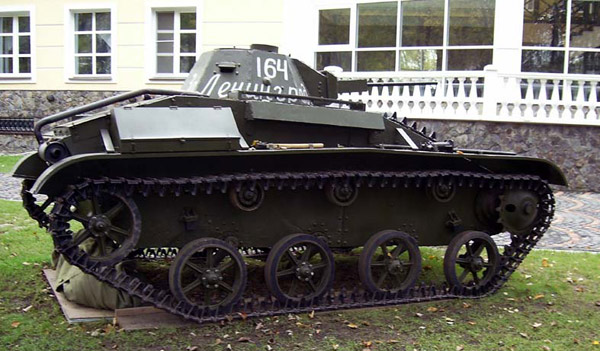
With the launch of a series of further development of T-60 was continued, as his book and weapons did not meet the requirements of the times. The thickness of the frontal armor plates with minimum angles of inclination and the front faces of the tower zygomatic, most exposed to enemy fire, increased from 25 to 35 mm. At the suggestion of NII-48, on the front part of the hull and turret T-60 set late release steel armor shields thickness 10 mm. The screening was performed in the manner, that between the screen and the hulls there was an air gap, that is, the T-60 tank became a spaced booking. Such a configuration of protective elements allows more effectively resist armor-piercing projectiles - screen destroying projectile tip and decreased his normalization, and the main armor detained projectile or its fragments. This improvement was welcomed by the troops at the front. With weapons, things were not so successfully - on experimental tanks T-60 tested a variety of more powerful tools than with regular TNSH, but none of them was accepted for serial production. After the appearance of new lung tank T-70 have continued this work in relation thereto, and the emphasis in the improvement of the T-60 is shifted toward the creation on its base of self-propelled artillery and anti-aircraft installations.
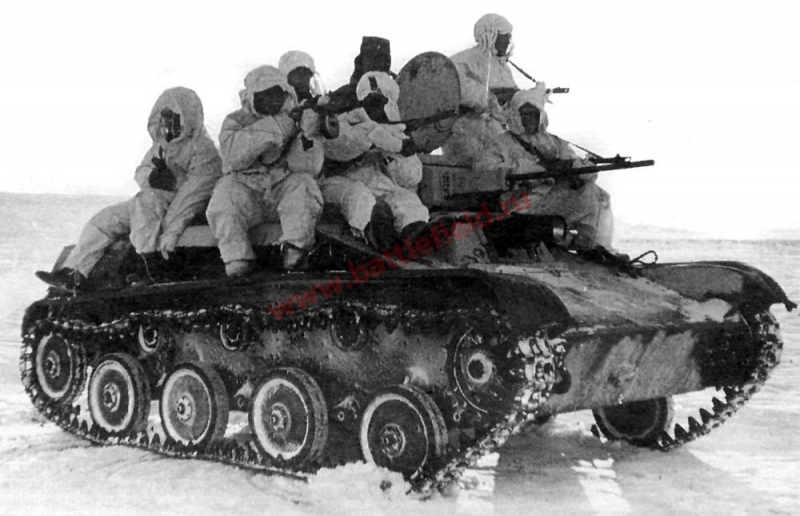
Production
After developing lung tank T-60 Moscow plant № 37 released 20 Machines of this type, then in November 1941 the year he began his evacuation to Sverdlovsk. For a long time it was thought, armored housing that T-60 for the plant № 37 in Moscow produced the Kolomna Machine-Building Plant named after Kuibyshev. but, according to research by George Pasholoka, actually Kolomna Plant was given the task to manufacture hulls and turrets of the T-30 (030) 17 July 1941 of the year. Before evacuating tanks 060 plant was not engaged, and confusion in the history of the T-60 at the Kolomna plant has made it, that in the original documentation tanks 030 It means either as T-60, or T-40 non-floating”.). In October 1941 , his department, It has been producing hulls for T-60, They were evacuated to Kirov at the site of the Kirov Machine-Building Plant named after the People's Commissariat for Railways posts 1 May. On the basis of these two companies a new plant number was created 38, which the, It is believed, in January 1942 Year built his first tanks T-60 according to the drawings of the plant number 37. (According to the research mentioned above,, it is also a mistake. Tank production in Kirov started with the use of a reserve of T-30. It was only in February, the first T-60 were collected.) Krasnoarmeysky Shipyard (№ 264) g. Stalingrad also adjusted release lung T-60. The largest number of light tanks T-60 in 1941-1942. built GAS. In participated Izhorsk Podolsky and allied plants as in the process of manufacturing hulls and towers T-60 (for Moscow factory number 37), Kulebaki Metallurgical Plant (for GAZ), Novokramatorsk Machine, Voroshilovgrad Locomotive and Mariupol Metallurgical Ilyich (for HTZ). 20-mm with Gun received Kovrov plant № 2, Tula arms factory number 535, Mednogorsky plant number 314 and Kuibyshev plant number 525. Trucks produced at the Stalingrad Tractor Plant named after Dzerzhinsky.
In January 1942 year adopted a light tank T-70 was adopted by the Red Army, and starting a gradual transition of the plant began in March of that year, (except number 264, who was in a combat zone), producing light tanks, the production of "semidesyatki". In May 1942 It has been completed the release of the T-60 at the factory number 38, as used up to a reserve hulls "shestidesyatki" during the second half 1942 year to produce the T-70 went GAS (in fact, from April), and last T-60 collected plant № 37 in Sverdlovsk, at the very beginning 1943 of the year.
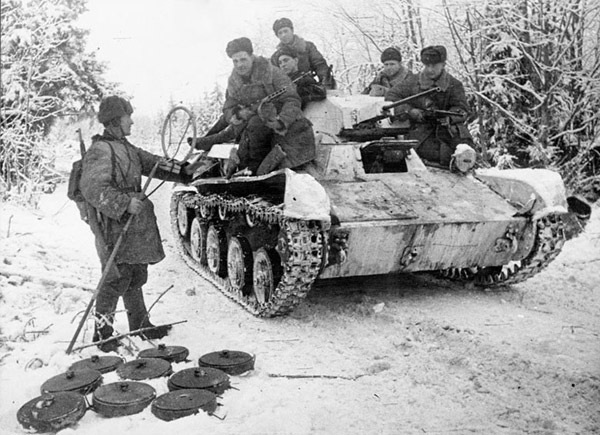
Design
T-60 has a typical layout scheme for Soviet light tanks of the time. The tank had five branches, listed below in order from the front of the machine to the stern:
– transmission compartment;
– office management;
– the engine compartment on the right side inside of the body;
– fighting compartment on the left side inside of the body and in the tower;
– aft compartment, housed the fuel tanks and the engine radiator.
This layout scheme is defined in the whole set of advantages and disadvantages of the tank under the machine in its class. In particular, front-mounted transmission compartment, ie driving wheels, It led to increased vulnerability, since it is the front extremity of the tank is most exposed to enemy fire. On the other hand, Unlike Soviet medium and heavy tanks, the T-60 fuel tanks were out of the crew compartment in insulated armored bulkhead compartment, which increased crew survival in lesions tank. Other advantages of the selected T-arrangement 60 may include a small overall height and weight of the tank as compared with the other machines other layout diagrams. Consequently, increased dynamic response of the tank, and did not need a powerful engine specialized for him. The crew consisted of two people - the driver and the vehicle commander.
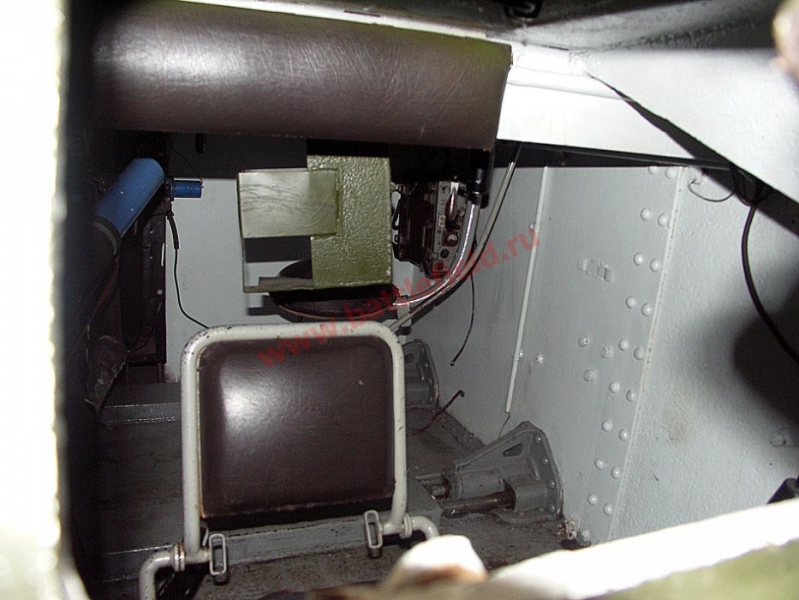
Light tank T-60. Left side view of the driver
Armor hull and turret
Body armor tank design engineer A. AT. Bogachyova welded from rolled armor plates with a thickness of 10 to 35 mm. late release machines protected armor thicker than the earlier samples of serial 60-T. Armor protection of dyfferentsyrovannaya, bulletproof. Frontal and stern armor plates had a rational angles, vertical board. A number of body armor plates (nadmotorny, under-turret and stern lists) are removable for ease of maintenance and replacement of various components and assemblies tank. The driver is centered in front of the tank armored housing. For the convenience of its work on the frontal part of the body was placed bronerubka with a flap. In a combat situation visor fell, and a driver observation led through the inspection device in this panel, which also protects the armored shutter. On the roof of the cabin located hinged hatch for landing, the landing of the driver. The housing also had of the bottom hatch for emergency escape of tank crews and a number vozduhopritokov, hatches, hatches and technological openings for ventilation of habitable space of the tank, drain fuel and oil, access to fuel tanks, other nodes and aggregates machines. A number of these openings caps defended armor, flaps and covers. To waterproof housing hatches were mounted on rubber pads, and holes for bolting the housing parts compacted tow.
Tapered octagonal tower welded construction engineer Yu. P. Yudovich had bead thickness 25 mm, which are arranged at an angle of 25 ° to the vertical to increase the resistance of. In later machines the thickness of the front of the zygomatic sheets tower was increased to 35 mm. The frontal part of the tower had a rectangular niche for installation of arms and protecting his mantle result. Turret rotation axis does not coincide with the plane of longitudinal symmetry of the machine due to the starboard motor and installation of the tank has been displaced to the left of this plane 285 mm. Designers managed to achieve a very low overall height of the tower - all 375 mm. Also for the T-60 was planned release of circular conical towers, and not only the welded structure, but additionally cast and forged. However, these plans were not implemented in practice, produces only one was welded octagonal tower. In the first samples for the landing-landing vehicle commander on the cover of the tower was located octagonal folding sunroof, It was later replaced by a semicircular . In its turn, in the hatch was a small hatch for external alarm flag. The tower was set for a ball bearing was fixed grippers and avoid stalling under strong roll or roll-over of the tank.
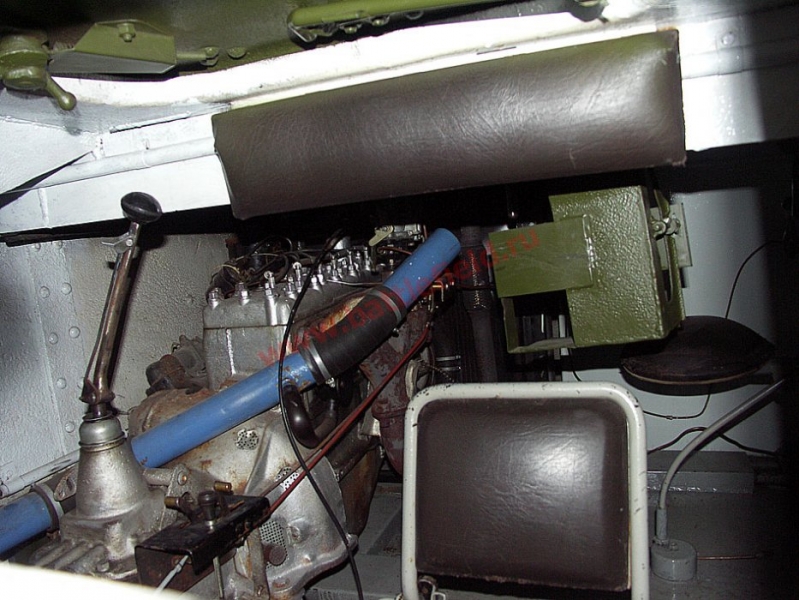
Light tank T-60. Right side view of the driver
weaponry
The main arms of T-60 was rifled automatic gun TNSH (TNS-1) caliber 20 mm. The gun was mounted on the journals in the tower, in addition to its trunk masks additionally protects armored casing. The gun had a barrel length TNSH 82,4 caliber, the height of the line of fire was 1480 mm, the maximum range of direct fire reached 2 km. With the instrument was paired 7.62-mm machine gun DT, located in a single installation with gun TNSH. For ease of use coupled installation gun shifted to the right by the plane of symmetry of the tower, machine gun was located on the left. Tandem installation had vertical angles interference from -7 ° to + 25 ° and circular sector horizontally shelling. Horizontal Drive guidance Geared type tower located to the right of the twin installation, for quick turning turret commander of the forces he could be disabled. Vertical guidance mechanism of the screw type to the left of the twin installation. These mechanisms and drives slopes guns and machine guns have been borrowed from the construction earlier serial lung tank T-40. DT machine gun could easily be removed with a twin plant and used outside of the tank. In principle, the same could be done with a gun TNSH, only the ease and speed of execution of this operation is not different.
Ammunition gun was 750 shots unitary loading. shells were placed in a tape for automatic gun supply 58 shot and 58 Split units. This tape was packed in a box, which was placed on the bracket under the gun. Yet 12 boxes were on the shelves inside the fighting compartment of the tank. When firing cartridge cases were ejected to the outside of the tank, and exhaust units of tape along the rail fell on the bottom of the tank. Upon emerging from the barrel when firing the projectile speed was 815 m / s. The composition of ammunition were:
– unitary shot with armor-piercing incendiary projectile (BZT-20);
– unitary sabot round with armor-piercing incendiary projectile (a core of tungsten carbide) - from 1942 of the year;
– unitary shot with high-tracer and instantaneous fuse (BY-20);
– unitary shot with high-incendiary projectile and fuze Instantaneous (OZ-20).
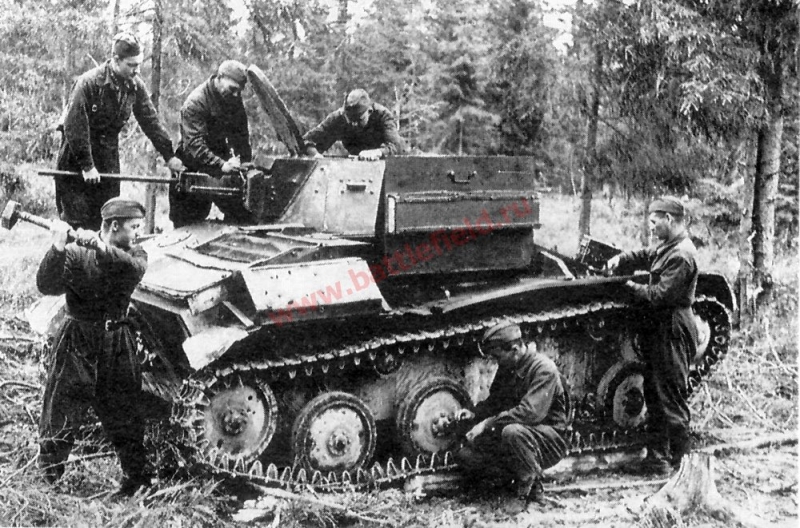
About penetration TNSH guns are conflicting data. according to one, armor-piercing incendiary projectile with a core of tungsten carbide along the normal distance past 500 m thick armor plates 35 mm. on other, at a distance 100 m BZT-shell 20 directs an angle 30 degrees 18 mm armor plating, And it was the initial, not guaranteed penetration. Also, there is a very low zabronevoe action small-caliber armor-piercing shells - mostly German tank or armored personnel carrier, the affected queue of TNSH, not disabling. Besides, doubts exist in supplying ammunition T-60 subcaliber armor-piercing incendiary projectiles. This is indirectly confirmed by the front reminder tankers, which literally reads as follows: "20-mm tank gun pierce armor-piercing projectile in vulnerable locations at distances of up to 200 m ".
Small power fragmentation shells somewhat compensated automatic fire cannon, Lets give the target a few shots during, required for the reloading of a gun type opt.
Coaxial machine gun DT had ammunition in 945 rounds (15 CDs).
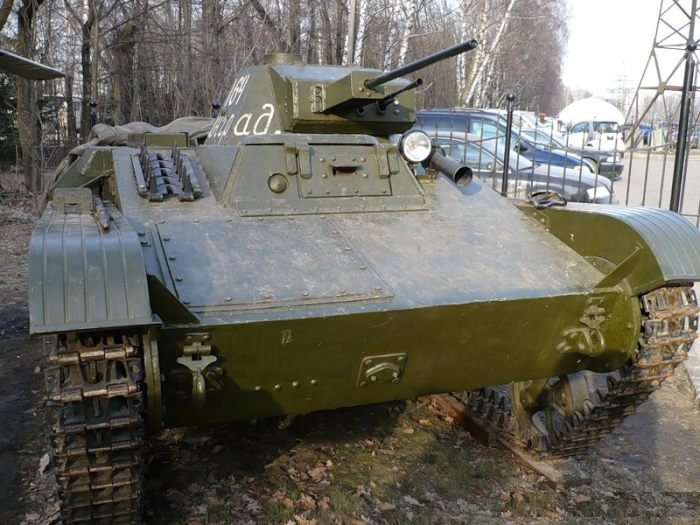
Engine
T-60 was equipped with a six-cylinder four-stroke inline carbureted engine liquid cooling GAS-202. GAS-202 has been derated to 70 l. from. (51,5 kW) Tank version of the automobile engine GAZ-11 power 85 l. from. power reduction was aimed at increasing the reliability of the engine and increase the resource. The engine in some cases equipped with speed controller; in this case the carburettor regular MKZ-6G replaced carburetor M-1. Due to the lack of standard engines GAS-202 (problems of cooperation between subcontractors, lack of necessary materials, bomb attacks on shops GAZ) Some T-60 equipped with other engine models GAZ production (eg, GAZ M-1) or "Ford" capacity 65 or 90 l. from. (48 or 66 kW). Some sources claim the installation of the T-60 in the low-power engines GAZ-AA and GAZ-MM power 40 or 50 l. from. This aspect is yet unclear in the history of the T-60; the results of discussions at the Military History Forum has been found mention of the three T-60 with motors 40 l. from., set in one of the training units. However, since, what, memoirs H. A. Astrova, in 1941-1942. "That was put, if it was not for staff positions ", and this kind of substitution is not fully documented (although it should at least have been fixed military acceptance), on the number of T-60 remains open. Starting the engine is produced mainly by hand, using a crank. Using the starter SL-40 power 0,8 l. from. (0,6 kW) It allowed only in battle and to advance a warm engine.
For the latter purpose, a first for the Soviet mass-produced T-60 tanks equipped with Engine preheater for its operation in winter conditions. This unit has been designed and. D. Alperovich and B. I. Ginsburg. Between the bead of the tank and the engine was mounted a cylindrical pot, due to the thermosiphon circulation of the coolant in which the display. The boiler is heated up outer gasoline blowtorch. After passing the boiler, warm air fed to the crankcase breather.
Two fuel tank capacity 320 l housed in the aft compartment. supply of fuel was enough for 450 km running on the highway, Later the tanks with reinforced armor had a slightly smaller range - 410 km.
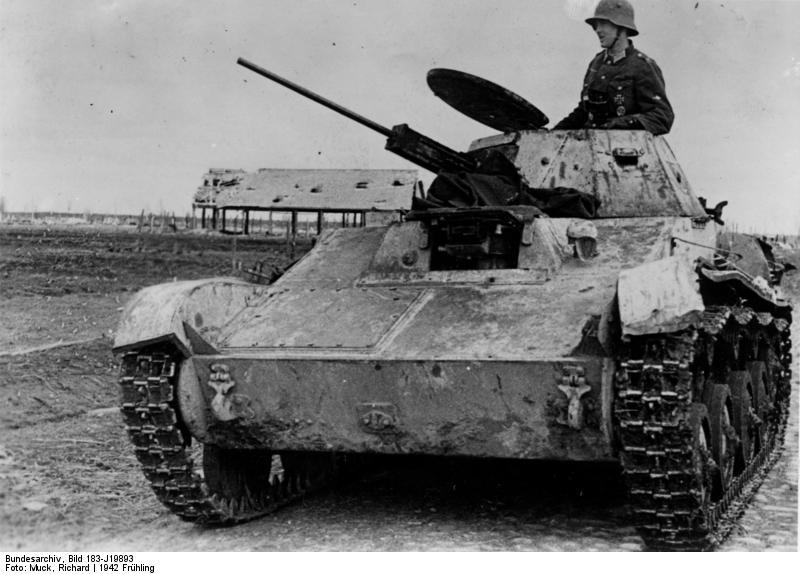
The captured T-60 in the service Vermahta, 1942 year
Transmission
The T-60 was equipped with a manual transmission, which included:
– main clutch single disc "steel Ferodo" dry friction, is mounted on the flywheel;
– four-stage gearbox with dual (4 transmission and forward 1 ago), borrowed from an experienced (while) truck GAZ-51;
– kardannыj Bhoomi;
– conical main transfer;
– two multi-board clutch with dry friction "steel on steel" and belt brakes with pads from Ferodo;
– two simple, single-board gear.
All transmission control actuators - mechanical, a driver operated by turning and braking of the tank by two levers on either side of his workplace.
Chassis
Chassis tank T-60 to some extent has been inherited from its precursor T-40. Suspension of the machine - without the individual torsion damper for each of the 4 uni-directional rollers of small diameter (550 mm) with rubber tires on each side. Depending on the manufacturer's track rollers carried a cast spitsovannymi, or solid stamped. Opposite extreme hardpoints hulls welded to the rocker suspension travel stops with rubber buffers for shock absorption. Drive wheels lantern meshing with removable gear rings are placed in front, and sloths from the track tension mechanism - back. At first sloths machines were smaller in diameter (460 mm), than the road wheels; It was subsequently carried out the unification of these details. The upper branch tracks supported by three small support rollers on each side. To the body of the tank priklopyvalis bumpers to prevent jamming of the tracks when the tank is moving with considerable roll on one of the sides. caterpillar Melkozvenchataya, the width of the truck is dvuhgrebnevogo 260 mm.
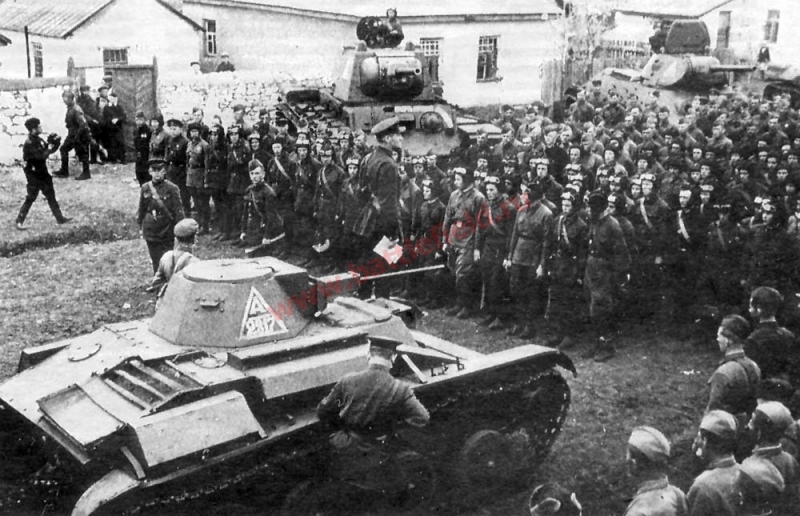
electrics
Wiring in the T-60 was a single wire, the second wire served hull of the machine. power sources (operating voltage 6 AT) were Generator G-41 with the relay-regulator PPA-364 output 0,2 kW battery stamps 3-STE-112 total capacity 112 Ah. The tank had and the second battery of the same brand. On linear machines it was spare, and on the commander, 71 equipped with radio-TK-3, It includes a network for the operation of radio stations. electrical consumers included:
– exterior and interior car lighting, scales backlight unit sighting;
– External sound signal CE-4714;
– means of communication - the radio station and tank intercom (or unilateral tricolor and warning from the commander to the mechanic-driver);
– electrical motor group - starter SL-40, RS-11 ignition coil, Dispenser F-12, U12-10 candles and switch 69-K.
Sights and observation devices
Tandem installation TNSH gun and gun sight DT equipped with main TMFP, if damaged after its principal sight automatically removing the fly platoon reserve mechanical sight. The driver and the commander T-60 also had some viewing devices (one in the panel driver, Two of commander) to monitor the surroundings outside the tank. Visibility of the car was regarded as quite satisfactory.
Means of communication
On tanks means linear internal one-way communication from the commander to the driver-mechanic served tricolor light-signal device, means of external communication except the check boxes are not provided. On command tank 71 installed radio-TK-3 and the internal intercom TPU-2 2 subscriber.
The transceiver 71-TK-3 was a set of transmitter, receiver and umformerov (one-anchor motor-generators) for their food, be connected to the onboard power supply voltage 6 AT. From a technical point of view it is a duplex tube heterodyne radio shortwave, operating in the frequency range of 4 to 5,625 MHz (respectively wavelengths from 53,3 to 75 m) output power 20 W. Parked in a telephone communication range (voice, Amplitude modulation of the carrier) mode with no interference reached 16 km, the move is somewhat decreased. Most of the communication range can be obtained in telegraph mode, when the information is transmitted in Morse code telegraph key, or other discrete coding system.
Tank intercom TPU-2 device is allowed to negotiate between the tank crew members, even in very noisy environment and the headset connect the headset (headphones and laringophones) to the radio for external communication.
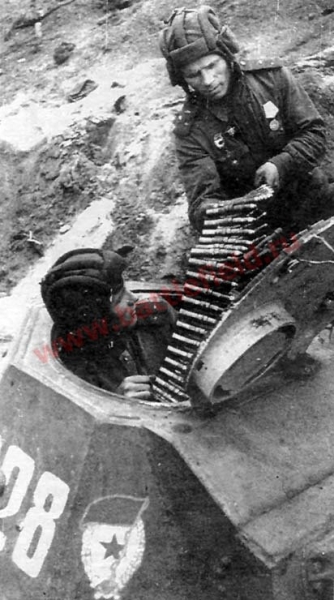
modifications
serial
Officially tank T-60 had no modifications, but released the machine can be divided into several options, which are very much different in its performance characteristics as a result of varying the total mass of the tank, which affects the other indicators (specific power and ground pressure, stock moves, etc.. P.):
– T-60 early series with a maximum thickness of the frontal armor 25 mm, sloth not identical supporting rollers, armor rolled cemented.
– T-60 main issue with maximum thickness of the frontal armor 35 mm, idler and track rollers are unified, armor rolled homogenous high hardness.
– Shielded T-60 with mass to 6,5 t.
experienced
Lack of arms of the T-60 has actively promoted the work on its upgrading to a more powerful artillery systems. It is also an option for the tank, more suitable for components and assemblies instead of analog manufacturing GAZ ZIS production plant. several experimental variants was tested T-60:
T-60-1 It was developed in the fall 1942 years in the design bureau of the Moscow Automobile Plant named after Stalin led by B. M. Fitterman and A. M. Avenarius. This machine is repeated layout scheme T-60, but it was larger in size due to the installation of more powerful (88 l. from. / 65 kW), heavy and bulky bus engine ZIS-16. Armament T-60-1 was similar to the T-60, but more powerful propulsion system has allowed book strengthen. Adopted in mass production of the T-60-1 was not taken.
T-60 with 37 mm gun ZIS-19
T-60 with 37 mm gun ZIS-19 It was developed by the design bureau of the plant number 37 at the beginning 1942 of the year. ZIS-19 was created in March under the guidance of. D. Grabin factory number 92 in Gorky. New artillery systems mounted on the chassis T-60 in the new tower with improved shape commander's cupola. 37-mm gun ZIS-19 had a ballistics 37-mm automatic anti-aircraft gun mod. 1939 g. (61-TO) and its armor penetration was not inferior to 45-mm tank gun 20-K. She was also simpler in design and more technological in production, than 45 mm cannon 20-K. However, setting a heavy tower with a new instrument worsened supply tank to move 390 km and, what was more significant, 37-mm gun ZIS-19 quickly loses its quality because of the strong height of the barrel. Add to this the problem with the removal of production shots for a 37-mm anti-tank gun mod. 1930 g. (1-TO) and lack of shots for anti-aircraft guns 61-K. As a result, the T-60 with 37 mm gun and Red Army adopted in mass production was not taken.
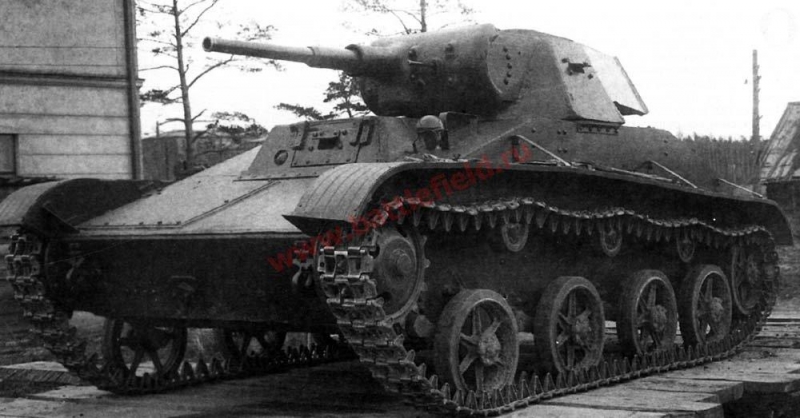
T-60-2 with 45 mm gun ZIS-19BM
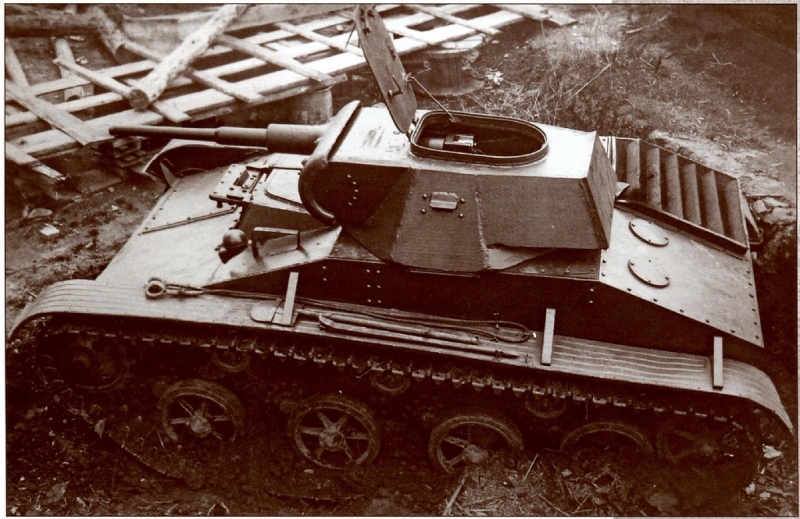
T-60-2 with 45 mm gun ZIS-19BM – view from above
T-60-2 It was developed in the spring 1942 years in the design bureau of the plant number 37 led H. A. Popova. On the standard chassis of the T-60 set a new tower with a 45 mm cannon ZIS-19BM In construction. D. Grabin number of production plant 92. New instrument showed good results for armor-piercing action and rate, but due to the increased weight of the tank power reserve has decreased to 330 km. In connection with the adopted light tank T-70 works were terminated 60-2 T.
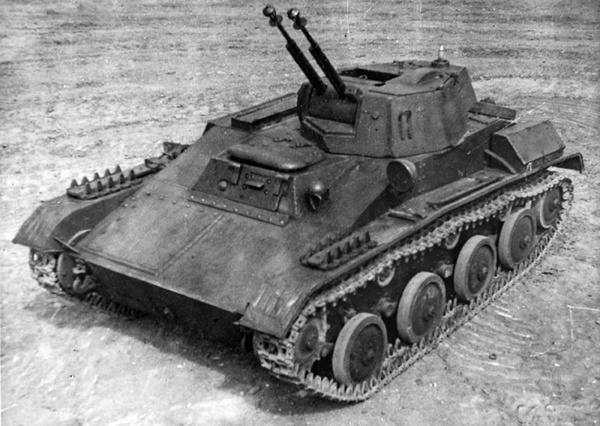
T-W-60 with two large-caliber machine guns DShK
T-60-C It was developed in the second half 1942 years in the design bureau of the plant number 37 led H. A. Popova. For standard chassis T-60 set modified native tower with two large- pulyemyotami DShK roofless. Machine guns have a large angle of elevation and equipped zenith collimator sight, so you can use the tank to protect the units on the march and in battle against air attack. However, due to improper installation of the zenith of the sight and extremely low ergonomic hand combat locations tank T-W-60 was not even allowed to testing.
Also considered the possibility of substitution by serial T-60 20 mm cannon TNSH-1 on its improved version TNSH-2 of the same caliber. The latter turned out to be unreliable and was not taken into service.
Machines based on the T-60
Tank T-60 served as the base for self-propelled guns ASU-76 and PM-8-24. The first was a half-open unit 76 mm divisional gun ZIS-3 on the chassis T-60. Installation adopted in mass production was not taken due to the presence of a sufficient amount of more convenient for the crew and more successful designs of CS-76. BM-8-24 was a reactive volley-fire system, the resulting combination of previously developed for tank base T-40 artillery pieces and the chassis T-60 (as the T-40 was withdrawn from the production, a MRL based on it are proven in combat). Artillery unit BM-8-24 consisted of 12 guides such as "beam", on which the top and bottom were charged 24 82-mm rockets M-8. fire control device allows you to fire a volley or a different tempo produced shells.
Also small series released in Romania ACS TACAM, armed captured 76mm cannon F-22 is captured on the basis of the T-60.
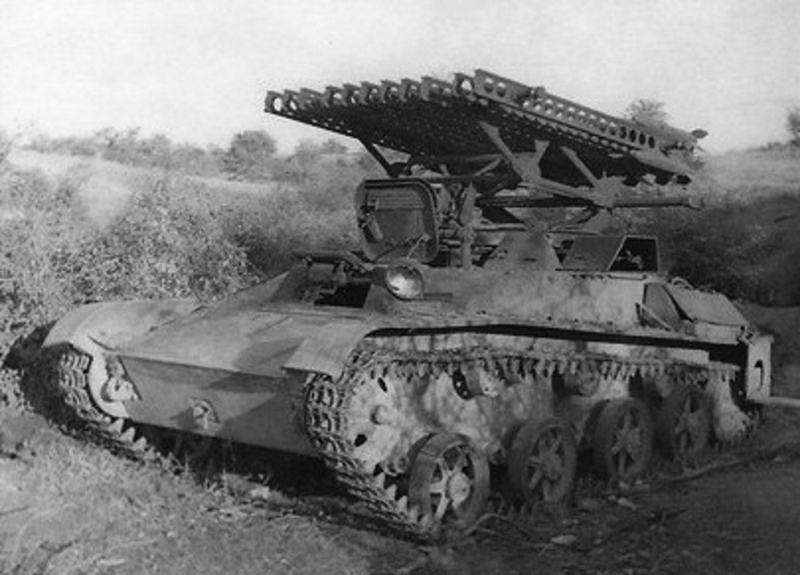
BM-8-24 - light weight Soviet self-propelled artillery unit class multiple launch rocket systems on the basis of the T-60
"Wings of the tank"
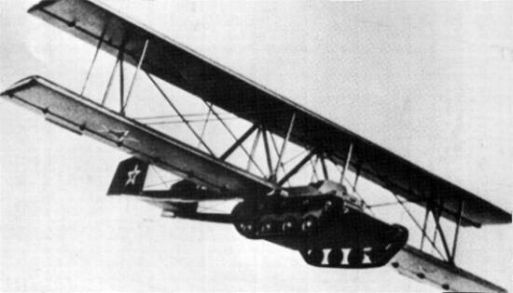
A-40. The only known photograph.
One of the most unusual projects use the T-60 was a proposal famous aircraft designer Oleg Antonov make under it towed glider disposable application for the transfer of the tank through the air as part of airborne troops, or to enhance the quality of guerrilla groups. As-towing aircraft to be used or outdated four-engine heavy bomber TB-3, a modern twin-engine long-range bomber IL-4. After uncoupling tank landing on a small platform, and after the reset of the wings and tail surfaces could directly engage the enemy.
In summer 1942 year this glider was built at a factory in Tyumen. It was called the AT-1, A-40 or CT ("Wings of the tank"). The glider was a biplane wing box with double-girder tail. This construction is mounted on the hull of a tank T-60. glider length was 12 m, wingspan - 18 m, area of the wing box - 86 m², Flight weight - 2 t. Flight mass of the tank was supposed to 5,8 tons and the payload on the wing - 90 kg / m².
In August-September 1942 CT, the glider was tested in the Flight Research Institute (steer) in g. Zhukovsky. To facilitate the airframe with the T-60 was removed tower, nadgusenichnye shelves, headlights and merged most of the fuel. The crew of the lightweight CT consisted of one person, which was the famous test pilot and glider C. n. Anokhin. Towing CT served as TB-3 bomber with forced modification engines AM to 34RN 970 l. from. (713 kW). Aeropoezd successfully took off, airspeed reached 130 kmh, and height - 40 m; but then at the TB-3 was a sharp increase of water temperature in the engine cooling system. Aeropoezd began to decline, and because of the danger of overheating motors towing his commander P. A. Eremeev decided to unhook the glider. Thanks to his skill and prowess with. n. Anokhin managed to land not far from the glider airfield near Moscow Bykovo, start the engine and the tank, not throwing wings, move in the direction of the command post of the aerodrome. Nepreduprezhdonny an unusual test aircraft, aerodrome flight leader led the embattled anti-aircraft battery and held Anokhina. After the arrival of representatives of FRI incident was over, and the tank under its own power returned to base.
Tests have clearly shown, glider that the developer did not consider the additional aerodynamic resistance of the tank tracks and cables, fastening biplane box. As a result, It was obtained by a low value of required power-towing aircraft engines. In reality, only CT could tow a modern four-engine strategic bomber Pe-8, which was released about 80 pcs. These machines are used for in-depth raids against Germany and its allies, rely on their selection as towing CT was unreal. As a result of the project "Wings Tank" has been closed.
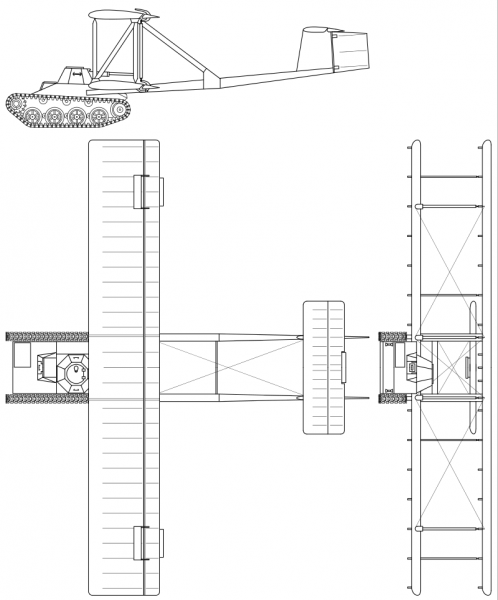
A-40. projection glider
Organizational structure
Due to the catastrophic loss of material in the first half portion 1941 of the year, it quickly fill in 1942 year and repeated change of views on the organizational structure of the tank units of its common options for that period does not exist. Furthermore, due to substitutions in the production of one model to another tank lung, in organizational structure (especially in 1941 year) It does not specify the type laid on the state machinery, but instead used only the total number of light tanks, which could be a variety of types - BT-7, T-26, T-40 all modifications and T-60.
Nevertheless, T-60 is used at all levels of the organization of the Red Army tank units - from separate tank battalions to the tank armies. In the initial phase of the war states repeatedly changed: eg, in a separate tank brigades, forming the end of August - beginning of September 1941 , there were 64 light tank (T-40 or T-60) of 93 laid. The armored brigades forming the end of September the total number of tanks was reduced to 67, and still later - to 46 machines (20 T-40 or T-60). Soon, due to lack of materiel had to focus on the formation of separate tank battalions in 29 machines (9 medium and 20 light). But to top 1942 of the year, when in some degree it has been overcome prevailed since the beginning of the war confusion in all respects, there were well-defined states of tank units. Instead of evolving in most cases on the basis of ad hoc independent tank battalions have the opportunity to shape suitable for large-scale offensive action tank corps. So, in March 1942 It has been approved by the state of the tank corps, in which the body had to have 100 tanks: 20 KB-1, 40 T-34 40 T-60. The increased release of cars allowed in mid-April 1942 year increase at exactly half the number of housing - up 30 KB-1, 60 T-34 60 T-60. However, since the mid 1942 year again there comes some confusion - the troops begin to ship new light tank T-70, and the composition of a particular portion starts to be dependent on time and place of formation, availability completions, etc.. P. factor. Many parts of the end 1942 - early 1943 year operated together as T-60, and T-70. AT 1943 , after removal of T-60 production as a light tank it is approved only T-70. The survivors "shestidesyatki" begin to be used in a variety of parts and units of infantry, mechanized, tanks and self-propelled artillery of the Red Army troops.
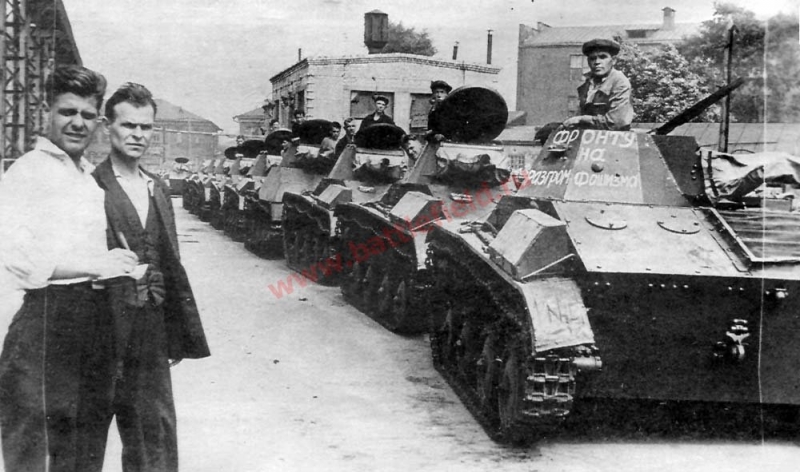
T-60 abroad
Light tanks T-60 were in service Polish Army. AT 1945 year there were three tanks of this type for them. A much larger number, "shestidesyatok" as spoils of war served in the Wehrmacht. Unlike often break T34 (and especially HF-1) Release of 1941-1942. with diesel engines, reliable gasoline T-60 with its widely widespread vehicle units and apparatus (a considerable amount of production of GAZ trucks operated by the Germans on occupied territories) fully satisfy the Wehrmacht as a fleet of armored towing anti-tank guns. Sometimes captured "shestidesyatok", used as tractors, Germans shot tower. A quantity of captured T-60 was transferred to Romania, where their gear was used to create the ACS TACAM.
combat application
For the first time in the fight T-60 went in September 1941 year as part of the 10th Armored Brigade, operating in the Poltava region. In large quantities, they have participated in the battles of 1941-1943., since the Battle of Moscow and ending with the full re-opening of Leningrad in January 1944 of the year. Especially great was the role of the T-60 during the defense of Moscow - as a result of a catastrophic loss of the material and the evacuation of tank factories rate of release of medium and heavy tanks plummeted, not covering even the minimum needs of the Red Army in these combat vehicles. As a result, they were replaced by lighter 'shestidesyatkami ". During the parade 7 November 1941 Year on Red Square held 48 taken from a pool of T-60. After the parade they were immediately sent to the front. 13 December 1941 of the year, after the start of the Soviet counteroffensive, first issued in Gorky T-60 took part in the Battle of Moscow.
During the campaign, 1942 , the T-60 was used on all fronts, from besieged Leningrad and ending lost Crimea. In besieged Leningrad "shestidesyatki" delivered by river, disguised by barge with coal, which did not cause dominant in the air German aviation special interest. Thus, unbeknownst to the enemy's movement of the 61st Armored Brigade was carried out. T-60 is actively used during all phases of the Battle of Stalingrad and his tragic prologue to the Red Army - Kharkov operation. Losses were high, since by the time the German anti-tank guns, Tanks and self-propelled guns were far superior to the class of T-60. It is only natural, Soviet tankers that due to light armor and arms do not favor too much T-60, calling him a "BM-2" - "a mass grave for two" (however, "Mass graves" was called all tanks). On the other hand, to the T-60 was virtually no performance claims, which was more frequent than in relation to T-34 and KB-1. There were tankers, T-60 which like - e.g., "Shestidesyatki" 91 Panzer Brigade bore such names, as "Terrible", "Eagle", "Bold". By the end of 1942 , the T-60 began gradually to remove from the front as the saturation troops T34, which has increased repeatedly release, and a new, more combat-ready model of light tank T-70.
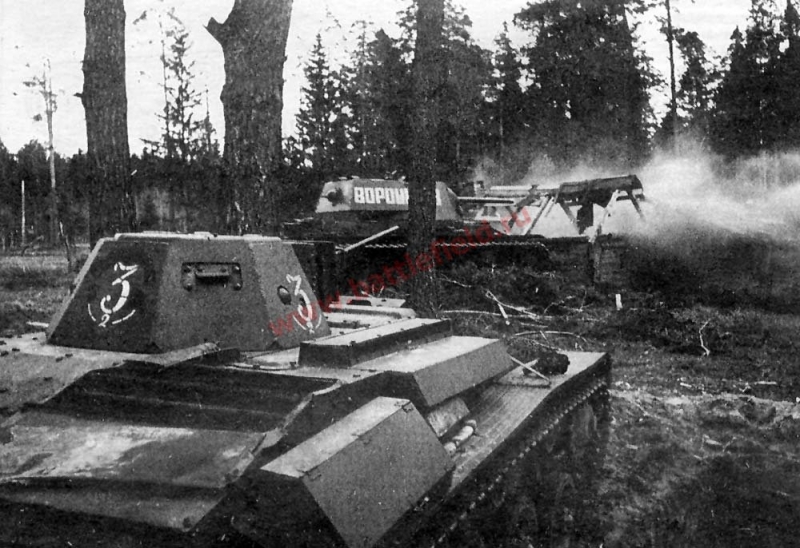
Historian Aleksei Isaev pointed out in his book,, that fights with sample Pz.IV Pz.III and September 1942 g. combat tsennostT-60 was negligible. The already weak arms T-60 refused to dusty air of the steppe near Stalingrad. So, in the report on the fighting of the 45th Tank Brigade of the 4th Tank Corps noted: "20-mm gun ShVAK in tanks T-60 in most cases is not used in battle, because it breaks down after a few shots ". In other words, He stresses Isayev, T-60 machine gun actually become "female", and equipped with a single machine gun rotary power.
T-60 continued to be actively used for the next 1943 of the year. "Finest hour" "shestidesyatki" became a breakthrough of the blockade of Leningrad, started 12 January 1943 of the year. Then I went into battle mentioned above 61th Tank Brigade, along with the 86th and 118th tank battalion. These parts operate in the first echelon of the 67th Army, and for the first day, crossed the Neva, they seized a bridgehead 2-3 km depth. At that, only light tanks, because they had the most essential advantage of the moment - low specific pressure on the bearing surface. This allowed the Soviet machines pass the Neva on the ice without preparation. Medium and heavy tanks were able to fight the next day, when engineering and sapper of the prepared reinforcing flooring for their transfer across the Neva. The tanks of the 61st Brigade joined with the first parts of the Volkhov Front, and for this success, she received the title of Guards.
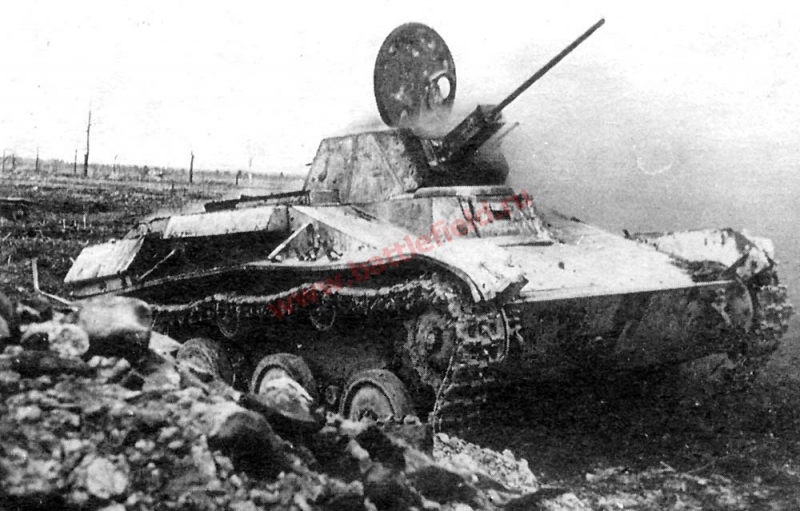
On the advantages and disadvantages of the T-60, as well as the courage of its crew consisting of commander Lieutenant D. AND. Osatyuka and driver elders and. M. Makarenkova during those fights shows the following excerpt from the book "The tankers in the battle for Leningrad":
get ahead, at dawn 18 of January, workers' settlements number 5, they noticed three tanks. Volhovtsy wanted to jump out of the car, run towards, but saw, it was Hitler's tanks are in a counterattack. What to do? To start the fight with the enemy on their little one, having a 20 mm cannon, - is meaningless. Decision is ripe instantly. the tank commander has instructed the driver-mechanic: "Waste to the grove, which took the edge of our gun emplacements!»
Tank, maneuvering, making unexpected and sharp turns, escaped from the fire of Nazi tanks, and Osatyuk led fire on them, I tried to blind, stun. The duel lasted for a few minutes. There were moments, when it seemed, that is about to overtake the armored monster, navalyatsya and deals. When the grove was about to 200 m, Osatyuka car turned sharply to the left. Hitler's head tank also turned, but fell under the fire of our guns and went up in flames. and he was then hit by a second tank, while the third left the field of battle.
"Now, Vanya, forward!"- he ordered the commander of the driver. Having caught up with his company, they saw an interesting picture - tankers drove the enemy infantry in a huge pit. The Germans resisted stubbornly, our tanks threw grenades. It was clear, be delayed, Fascists have time to dig in. Osatyuk orders Makarenkova dash to the edge of the trail, pave the track. then the tank, picking up speed, I rushed to the foundation pit, I am flying in the air and crashed into the Nazis.
"Well done! - shouted Lieutenant - now the action!». The car raced at high speed on the pit bottom, Nazis destroying fire and caterpillars. Having made several circles, tank slowed down, into the middle of the pit and stood. It was over. approached his.
During this battle the crew in full has been awarded the title of Hero of the Soviet Union. In much the same about the success of T-60 against enemy infantry says M. E. Katukov in his memoirs.
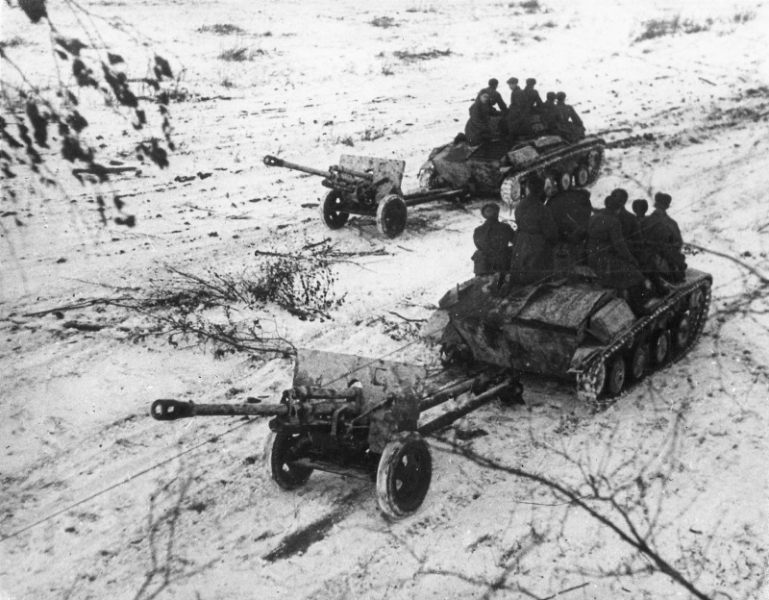
Calculations 76.2 mm sample implements divisional 1942 g. (ZIS-3) anti-tank units of Lieutenant Kovalenko (Central front) move on the armor of the T-60.
In general, the Volkhov and Leningrad fronts in particular maintained a large number of old vehicles in its ranks until 1944 , inclusive. In operation for the final removal of blockade of Leningrad involved BT-7, single T-38 and T-28, KB-1 and first releases a large amount of T-60, that on other fronts has not been the first line of tanks and other functions. for example, almost a quarter (21 of 88) Tanks of the 1st Armored Brigade of the Leningrad Front were just "shestidesyatki".
T-60 involved in the battle Kursk. So, of 1 Panzer Army had 18 tanks of this type, of 86 tank Brigade (Voronezh front, 38 army) — 15 tanks.
Beginning in the late 1942 of the year, the troops began to receive more and more new tanks T-34 and T-70. Consequently, weaker T-60 began to transfer to the most diverse work: Saving and support troops on the march, reconnaissance, the destruction of the bandits and saboteurs in the rear. They were used as a command vehicle parts self-propelled artillery, equipped with self-propelled guns SU-76, and as training tanks in the rear. Also, "shestidesyatki" were used as artillery tractors for antitank guns ZIS-2 and divisional ZIS-3. As such, the surviving T-60 served until the end of World War II and participated in the defeat of the Kwantung Army of imperial Japan in August 1945 of the year. Shortly after the Second World War T-60 were retired Red Army and sent to scrap. All existing museum T-60 (with the exception of the prototype in Kubinka) padded were found on the battlefield.
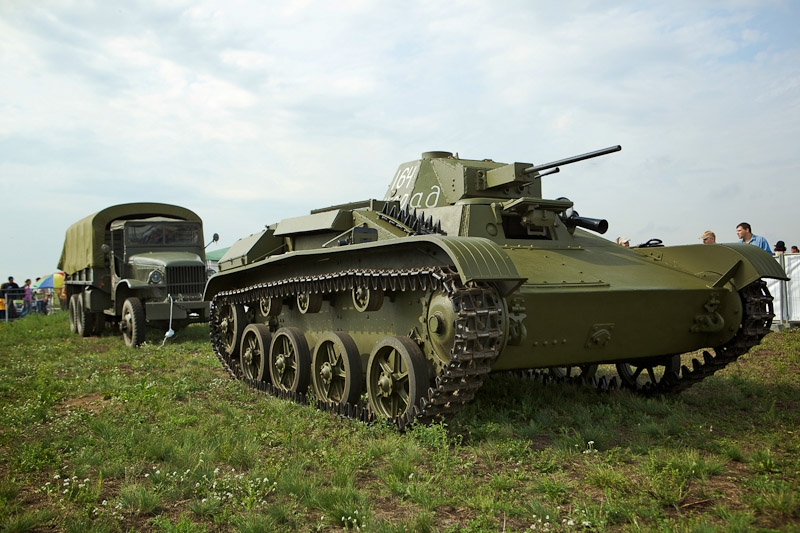
Interesting facts about the T-60
– German troops called T-60 "indestructible locusts".
– Hero of Soviet Union Irina Levchenko was fighting way from the commander of the T-60 to the commander of the division of these tanks.
– n. A. ASTROFF had to be persuaded aircraft armament Shpitalniy designer, "Dovolno mighty man", to develop a tank variant cannons ShVAK.
– Martial light armored vehicles, armed with a small-caliber automatic cannon and machine gun, widely represented in modern armies; concept, Representative which was T-60, it is alive and still.
– Light tank number 164 T-60 in the above-mentioned article D. AND. Osatyuka, one of the first to break into the mainland, He survived the war and in March 1947 year exhibited at the Museum of the Defense of Leningrad. However, after the elimination of the museum this tank disappeared.
– AT 1943 Omsk region, the children raised money for a light tank T-60 – "Baby". His driver-mechanic was one of the nineteen women-tank of the Red Army Sergeant Catherine A. Petliuk.
Evaluation of the project
Light tank T-60 in all of its tactical-tactical characteristics could be regarded as a forced move back into the tank manufacturing Soviet, both in general terms, and in the class of light tanks. Trend of the pre-war period in the Soviet tank building was an overall increase in firepower and security of all classes of tanks, however, the T-60 as compared to the pre-war light tank direct support of infantry T-50 clearly lost in these components. On the other hand, light tank reconnaissance in T-40 type to be floating in the weapons system RKKA, but the T-60 has lost this opportunity. In this way, T-60 proved to be midway between the T-40 and T-50 both in weight and size classification, and on the intended application, without the benefit of any of the, no other. However, "shestidesyatka" was a great step forward in another way.
A significant part of the losses of armored forces of the Red Army in the summer 1941 years wore non-combat character. Worn old tanks T-26 and BT with nedovedonnymi T-34 and KV during sverhforsirovannyh marches broke and threw themselves on the territory seized by the enemy, as a result of profound breakthroughs Wehrmacht some tanks were captured even on railway platforms - they did not have time to upload to join the fight or evacuate to the rear for repair. Quality comes from the factory of untreated constructively new T-34 and KV-1 has fallen sharply due to the appeal of a large number of experienced workers and replace them with women and adolescents, along with the requirements to maximize their output. As a result, even in spring 1942 year reports from the troops showed an unacceptably high percentage of failed for technical reasons, and left on the territory of the enemy tanks T-34 and KV-types 1. The situation was aggravated by the evacuation of the east main tank plants in the country - Kharkiv number 183 With them and the Leningrad. M. Kirov, which led to a sharp shortage of tanks in the autumn 1941 of the year.
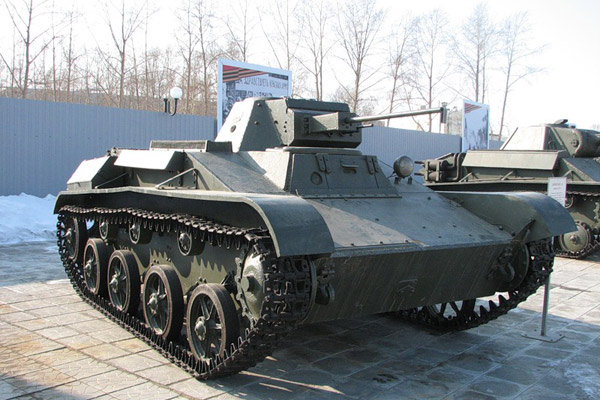
Therefore, held in the prewar years, a lot of work collective of the plant number 37 led H. A. Astrova on improving small and light tanks contributed to the establishment as soon as possible reliable, cheap, technological and overall combat-ready machines, which became the T-60. "Shestidesyatki" could be placed on plants, who could not produce a more complex T-34. Maximum use of already-established in the production of automotive components and assemblies increased reliability and maintainability of the tank in extreme shortage of skilled mechanics, drivers and skilled specialists in repair of tank engines in the field. As a result, loss of T-60 were largely already martial. This is what caused the high scores of tanks and. AT. Stalin. About 6000 issued T-60 allowed the Red Army to hold out until, when evacuated factories to mass-production of more powerful war machines.
Compared with foreign models, light tank T-60 was quite on the level almost equivalent to him by the German armament and booking "coeval» PzKpfw II Ausf F. Although the latter had a more powerful engine and more than one member of the crew, which gave PzKpfw II Ausf F number of advantages, He was also a half times heavier than T-60 and had no rational angle frontal sheets. Notably, German equip that projects very close to the weight of T-60 light tank PzKpfw I Ausf B 20 mm gun were unsuccessful, and Soviet machine within the category by weight of 5-7 tons looks very dignified among German, Italian and Japanese rivals. Reservation T-60 is quite adequate for protection against large-caliber machine guns, a frontal armor through the rational angle with a certain probability and can withstand contact 20 mm projectiles (and even low-speed 37-mm tank guns from the Japanese). 20-mm gun TNSH, in its turn, I was able to cope with any enemy light armored vehicles. Besides, T-60 is much less suffered from problems with the ergonomics, Soviet tanks characteristic of the period. Summarizing, can say, that in-class T-60 was one of the best examples, but in the European theater of hostilities to 1942 by the time these machines are definitely over, and only exceptional and tragic circumstances for the Soviet Union called it the appearance of life. It is only natural, that the unequal struggle against the T-60 is superior to the class enemy combat vehicles and, Consequently, heavy loss of their impact appropriately on the reputation of the tank. However, in later literature offspring H. A. Astrova received quite adequate assessment.
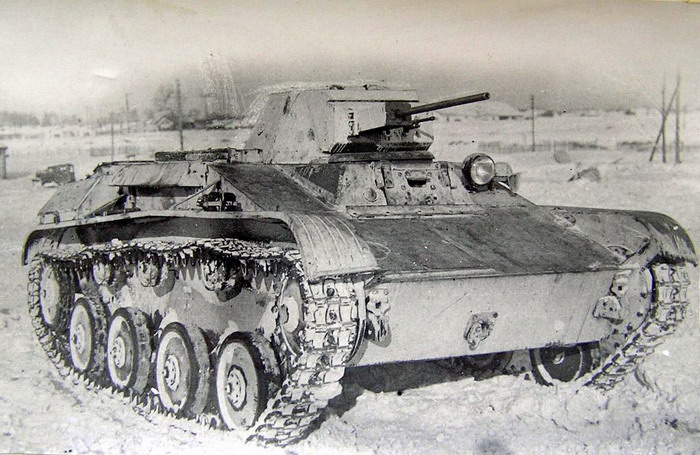
The performance characteristics of the tank T-60
Crew, pers.: 2
Manufacturer: Gorky Automobile Plant
The number of issued, PC.: 5920
Weight T-60
– 5,8-6,4 tons
Dimensions T-60
– body Length, mm: 4100
– housing width, mm: 2392
– Height, mm: 1750
– Clearance, mm: 300
Bumper T-60
– Type broni: Homogeneous rolled high hardness
– housing forehead (top), mm / city.: 15/70°[1] and 35/16 °
– housing forehead (middle), mm / city.: 35/−28°
– housing forehead (through), mm / city.: 30/−76°
– body board, mm / city.: 15/0°
– housing feed (top), mm / city.: 10/76°
– housing feed (through), mm / city.: 25/−14°
– Bottom, mm: 10
– corps roof, mm: 13
– gun mantlet, mm / city.: 20
– board towers, mm / city.: 25—35/25°
– tower roof, mm: 10
Arming T-60
– Caliber guns and stamp: 20-TNSH mm or ShVAK
– barrel length, calibres: 82,4
– gun ammunition: 750
– sights: TMFP-1, mechanical
– Shotgun: 1 × 7,62-mm DT
Engine T-60
– engine's type: GAS-202
– Engine power, l. from.: 70
The rate of T-60
– Road speed, kmh: 42
– Speed over rough terrain, kmh: 20—25
– Cruising on the highway, km: 410—450
– power density, l. p. / m: 10,7—12,0
– suspension type: individual torsion bar
– Unit ground pressure, kg / cm²: 0,53—0,63
– Gradeability, city.: 34°
– to overcome the wall, m: 0,6
– trench, m: 1,7
– fording, m: 0,9
Photo T-60

Soviet light tank T-60 with a landing on the march








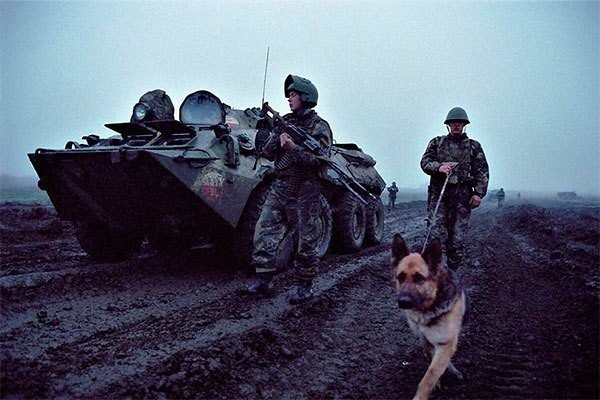



capacious and informative